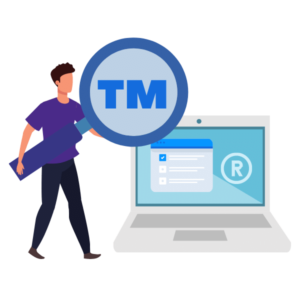How to Choose a Great Brand Name
Imagine launching a brand and learning it translates poorly in Spanish. Or someone is operating a vice site on the .com domain.
Far too often domain names are discussed at the end of a branding conversation – AFTER upper management or the client has fallen in love.
Branding, domain names and online commerce are connected more than ever before.
Below is a guide to assist in the naming process. Hopefully this helps you find the perfect brand… and the perfect domain.

Note: There is no perfect order for this guide. You should review all items before committing to a new brand name.

The Word Test
Questions to ask about the words of interest.
The Radio Test is a long established measure of branding. Basically the test is: “If you heard the brand name on the radio would you remember it, and be able to spell it?” If the answer is Yes then the brand name passes the test.
While common spelling of words is often the most popular there are many great brands who use made up spellings (think Lyft). You don’t have to necessarily spell a word properly but if you are going to be creative then keep it simple. If not, then make sure to pick a word that is easy to spell.
Also take note of geographical spelling variants. For example, British vs. American English (color vs colour).
You should always check the translation of a new brand name across several languages before committing. Some of the largest companies in the world have made this mistake costing millions in rebranding costs. Even local companies can benefit from a translation check. Inc. published a great article titled 20 Epic Fails in Global Branding on this very thing.
You want to have a name that is clear of any negative or confusing translation, especially for the markets / demographics you serve.

The People Test
Basically how other Humans will likely respond/feel about the words.
Does it make you happy? Does it inspire? Would you trust the name as a consumer? Does it sound authoritative?
Picking the right name can save a whole lot of marketing costs.
Brand names often fall into 3 categories. Positive, Neutral and Negative. You probably wouldn’t name your wellness center “Depression Health” or a luxury hotel “Cheap Spaces”. Look for positive or neutral words which identity with your vision. While money can brand almost anything, you really don’t want to start in a negative position.
Survey potential brand names with trusted people outside of the decision making group. You may be surprised at the feedback.

The Social Test
How the potential new brand name already exists online.
Have you Googled the potential brand name? You may be surprised at what results show even for the most abstract term.
This is critical for 3 letter domains since the same acronym is often used by different organizations around the world – some which you likely want to avoid being associated with.
You may also want to consider what companies are ranking for the exact match of the new brand. If you are a new company it may be worth pivoting to another name if the first page of Google is already covered with heavyweight brands, since trying to rank may be very difficult.
Always check alternate versions of the potential new brand name. For example, if you like Blue Sky then also research Blue Skies. If you like Good Home then also check Good Homes.
This also applies to trademarks and domain names. Good trademark lawyers and domain name experts should search for similar items and not just the exact match of your potential brand before providing an opinion.
We all want matching social handles but odds are your preferred one is probably gone. Before committing to a brand name check the popular social platforms (such as Twitter, Facebook and Instagram) to see what those handle are used for. While some are attainable, some are also used in a way which may hurt your brand.
Check your potential brand name’s definition on Urban Dictionary. Please.

The Domain Check
Domain before Brand. Brand before Domain. One typically needs the other.
The most common question domain name brokers get is “The domain I want is not in use”. This is comparable to saying “I want a piece of land because no one is living on it”.
Wrong. Most all good registered domain names have some use or history. Many have been registered since the 1990’s and no one has been paying fees for 20 years if they didn’t want the domain name.
There are also different ways of use. Many domain names are only used for email and do not have a website – that is still use. In fact, changing email can often be a whole lot more time consuming than moving a website.
Find out what the domain name you want is being used for and then see if it’s acquirable.
Good question. With privacy laws like GDRP it is often getting harder to find a domain owner. A good domain name broker can help you with this piece.
Try to learn why they own the domain and work with a broker to (a) estimate an approximate price and/or (b) attempt an acquisition.
Many great .com domain names change hands every year. You never really know unless you ask.
There are typically always other options if your preferred .com is not obtainable. Thousands of companies have started without their preferred .com domain and acquired it later. 200+ of those companies are here.
For most companies a .com is the preferred extension. However, many great companies started on (and still use) extensions like .co, .ai and .io. Some even use local country codes such as .co.uk, .ca and .fr.
It’s important to note that the extension you choose also provides trust in your brand. There is a reason why many non-profit organizations use .org since it has become the most trusted extension for non-profits.
Try to avoid alternative extensions which have very little adoption. If a consumer questions the extension they will probably also question your brand.

The Growth Check
Is your new brand name built for scale?
This is one of the most important questions to ask. For example, if you just sell Roses then GreatRoses.com may be a good name for you. However, if you want to sell more than Roses then its worth considering a broader name (such as GreatFlowers.com).
While some brands use a single product in their brand name with success, its more common to see great brand names that do not focus on a single product but rather the experience, category or word(s) which captures the essence of what they do.
If you are comfortable starting with a non .com extension (think of Mirror.co), or secondary .com (think GetMirror.com), that can still work but at least check on the possibility of acquiring the .com.
While there is no future guarantee the domain will still be available, you can bet if a billion dollar company uses the .com as a primary domain today it’s probably not something they are going to sell — unless you buy the whole company.

The Trademark Check
Lawyer. You may not always like them but you need them.
If you are going to invest money into a new brand then ensure it can be protected. Before committing to any brand name always speak with a trademark attorney to make sure the name (a) can be trademarked and (b) doesn’t have conflict with an existing trademark.
Have your attorney also look into foreign trademark registrations. Through international trademark treaties, applicants in many countries can obtain the benefit of their foreign filing date when they file an application in the US. What this means is you may file a US trademark and then during the process learn another company with a foreign trademark (UK for example) filed in the US after you did, but they are able to claim the benefit of their foreign filing date so that their application is now senior to yours for the purpose of determining priority.
Trademark law is complicated. Never assume you can trademark a new brand or someone else doesn’t already have rights.
Find a trademark lawyer and talk to them.